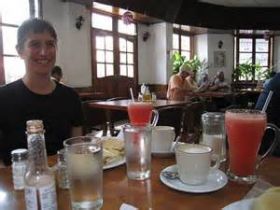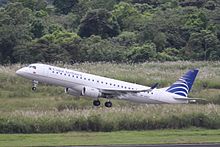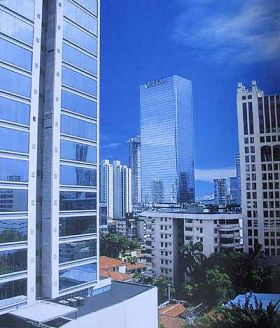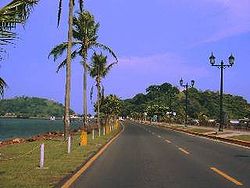Expenses & Quality of Life When Moving Abroad
 Several articles have been written through the years regarding the different issues when considering moving to a different country, especially as a retirement option.
Several articles have been written through the years regarding the different issues when considering moving to a different country, especially as a retirement option. (One of the many eateries in Panamá to enjoy refreshing fruit smoothies with friends, pictured.)
One of the most important things to consider when making the decision to move abroad is your emotional state. Sometimes you could be devastated to leave behind what you have always treasured in your life, not to mention if you have a loving and close family.
After that, you should consider your own attitude towards adjusting to new ideas. Are you open to new or different ways of doing things?
Next, think about the following (in rough order of importance). In order to do your research, take advantage of any and every possible tool you have in modern technology. Pull the information on different countries assessed by AARP and other recognized organizations. Read as many reviews as you can, including on this site.
- Quality of life. This is a bit difficult to define, but most people know what it is. In general, I use it to ask how comfortable and meaningful would your life be in your new home.
- Living expenses. How much would it cost you to live in your new home? (I give an example for Panamá compared to the US, below.)
- Your medical needs. If you require special medical care, is it available where you are considering moving?
- Weather.
(The ocean is never far from the Panamian isthmus, like the Amador Causeway, in Panamá City, Panama, pictured.)
- Relaxation. Relaxation is part of “quality of life” but I put it again here because it is so important that it should be considered separately.
- Government regulations and political situation.
- Local retirement benefits. Are there any? Benefits could include discounts, which would lower your cost of living, but some places have other benefits as well.
- Are there assisted living accommodations for the future? If not, would you return to your home country if the need arises?
- Social life and entertainment.
- Traveling. Would you be able to afford to travel? If so, how easy would it be to travel?

(Copa Airlines, the national airlines of Panamá, a hub for Central and South America, also serves US and Canadian cities, like Fort Lauderdale and Montreal.)
If you’ve passed these steps, visit any place you’re considering, several times, if possible. Never purchase a home until you are positive that is the destination of your choice.
Talk to the US embassy in those countries. Talk with local people, and talk with expats. Doing all these things will provide you with a very clear idea of the right thing to do.
Do not go only by the real estate pages on Internet. Do go to local agencies and day-to-day people on the street. Drive around yourself. Get a good lawyer who is familiar with both countries-- yours and the new one. It’s always good advice to get a local attorney, as they know exactly all the details, as opposed to the foreigners, who only know half of it. I also recommend a real estate agent who will guide you through the “good buys” and not only to the expensive properties.
Now, regarding expenses. From my own experience, I can compare a small country town in the Southeastern part of the United States and the city of Panamá, based on two retired people, using AC, and living a simple life. (Note: Of course, there are many differences between urban living in the big city of Panamá, with all its amenities and easy access to shopping, healthcare, etc. with small town living in the US, which doesn’t have these things.)
This comparison is based on two seniors, with a very simple life, no mortgage (only maintenance fee). For most prices, I put a range, which would be your cost, depending on your lifestyle.

(Panamá City's large apartment and condo complexes include many amenities, like gyms, beauty salons and spas , pictured.)
Electricity:
US: $93 - $300
Panamá: $27 - $78
Monthly Water:
US: $20 - $100
Panamá: $16 - $30
Installation of water meter:
US: $1,700 (charge for a new meter installation, which is non-refundable)
Panamá: $0 - $50
Car Insurance:
US: $1,600 per year
Panamá: $400 per year
Medical Insurance:
US: $105 - month on Medicare
Panamá: 0 - $600 per year (medical & hospital plan).
Discussion: Out-of-pocket expenses in the US are sometimes very high, around $6,000/year minimum, to be eligible for 100%, with an advanced supplemental program, while in Panamá, you can get SEMM (or Alert Ambulance) for $12 / month, which comes as often as you need, with regular doctors coming to your home. In addition, in Panamá, an office doctor’s visit is only $15 and in many good walk-in clinics (complete with lab and x-ray on premises), minimum office visits to specialists cost around $75. In Panamá, hospital expenses and surgeries are much less expensive.

Gasoline (per gallon):
US: $2.43
Panamá: $4.00
(Travel through Panamá on a motorcycle, pictured.)
Groceries:
US: $543+
Panamá: $325 (with the ability of getting lots of fresh veggies and fruits on any corner in Panamá, all year round, at ridiculously low prices.)
Movies:
US: $6.75 for seniors
Panamá: $1.75 for seniors
Dry cleanaing:
US: $8.50 to iron some dress pants
Panamá: $.60 to iron the same pants
Cable TV:
(About the same)
Clothes and Home Goods:
The prices in the US are definitely higher than in Panamá. In Panamá there are several good low priced stores in every mall and all over the city of Panamá with prices you will never find in the US. The only difference is that brand names or special occasion apparel are more expensive in Panamá, so I would recommend buying these items in your country of origin.
Overall, you should be able to live a roughly equivalent life in the city of Panamá compared with the small country town in the US for about 30 % less. If you were to live more in the country in Panama, which would be more similar to country living in the US, your costs would be about 40% less, compared to the US. 

(The countryside, known as "the Interior," Panamá, pictured.)



